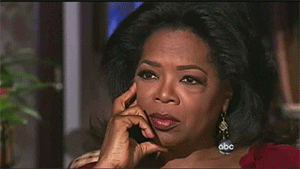Expert shares the one way to be in a 'position of power' when talking to someone intimidating
A communications expert shows you how to be comfortable in a tense situation.

A woman in a tough job interview.
We’ve all been in conversations with intimidating people. It could be the boss, someone you met at a party who is highly intelligent, or a date with someone you want to impress but are feeling a bit uncomfortable.
In all these situations, there is an imbalance of power and you feel like you’re on the high end of the teeter-totter.
To learn how to give yourself a bit more power in the interaction and even the upper hand, we need go no further than the landmark book on communications, Dale Carnegie’s 1936 classic, “How to Make Friends and Influence People.” In the book, he writes, “Be a good listener. Ask questions the other person will enjoy answering.”
To go a step further, a thoughtful question will make the other person think you’re intelligent, both mentally and emotionally. It may also make them reflective and feel vulnerable, leveling the playing field.
Why is asking great questions so important?
“Asking a question puts you in a position of power,” communication expert Matt Abrahams, a Stanford University lecturer, tells CNBC Make It. “I can actually raise my status and lower your status when I ask a challenging question.” He adds that asking questions “demonstrates you care, it demonstrates empathy, it demonstrates you’re willing to learn and, in some cases, admit you don’t know everything. Those are all valuable tools and assets to have when you’re trying to grow your career or deepen relationships.”
How to ask great questions
Abrahams says that there are three elements to good questions:
- They are concise
- They build on what the other person has said, furthering the conversation
- They revolve around the conversation topic’s bottom line
A great question allows you to enter the person’s orbit and become a partner or contributor to their endeavors. You are now a collaborator in the project or helping them solve a problem, which enables you to deepen your relationship with them.
Alison Wood Brooks and Leslie K. John at Harvard Business Review say people don’t ask enough questions because they fail to understand how beneficial they are, especially in a professional setting. “Questioning is a uniquely powerful tool for unlocking value in organizations: It spurs learning and the exchange of ideas, it fuels innovation and performance improvement, it builds rapport and trust among team members. And it can mitigate business risk by uncovering unforeseen pitfalls and hazards,” they write.
What is the 43:57 conversation rule?
Study after study shows that listening and asking questions are incredibly powerful tools for building social, romantic, or professional relationships. A 2016 study found the perfect ratio of talking to listening in a conversation is the 43:57 rule.
A marketing director at Gong.io analyzed 25,537 sales calls using artificial intelligence and found that the interactions where the salesperson talked 43% of the time and listened 57% of the time had the highest sales yield.
Even though this study was conducted on business interactions, it shows the power of what can happen when the customer feels heard and believes the salesperson understands their needs. It’s the same in a social situation where the person you’re talking to wants to feel valued and respected.
Ultimately, it should make many people out there breathe a sigh of relief to know that the next time they speak with someone intimidating, they don’t have to try to bowl them over with incredible wit or insights. Instead, you just have to listen and ask a few thoughtful questions, and you’ll balance the power dynamic while coming off as more likable at the same time.
- Here are a few common questions about Asians you should never, ever ask. ›
- A struggling cook asked Gordon Ramsay a personal question, and he responded in an unexpected way. ›
- This innocent question we ask boys is putting more pressure on them than we realize ›
- This 3-step Harvard conversation trick makes shy people more likable - Upworthy ›
- The weird finger trick that improves your listening skills - Upworthy ›
- Personal development coach says you should be a little intimidating - Upworthy ›
- The conversation mistake that instantly kills rapport - Upworthy ›



